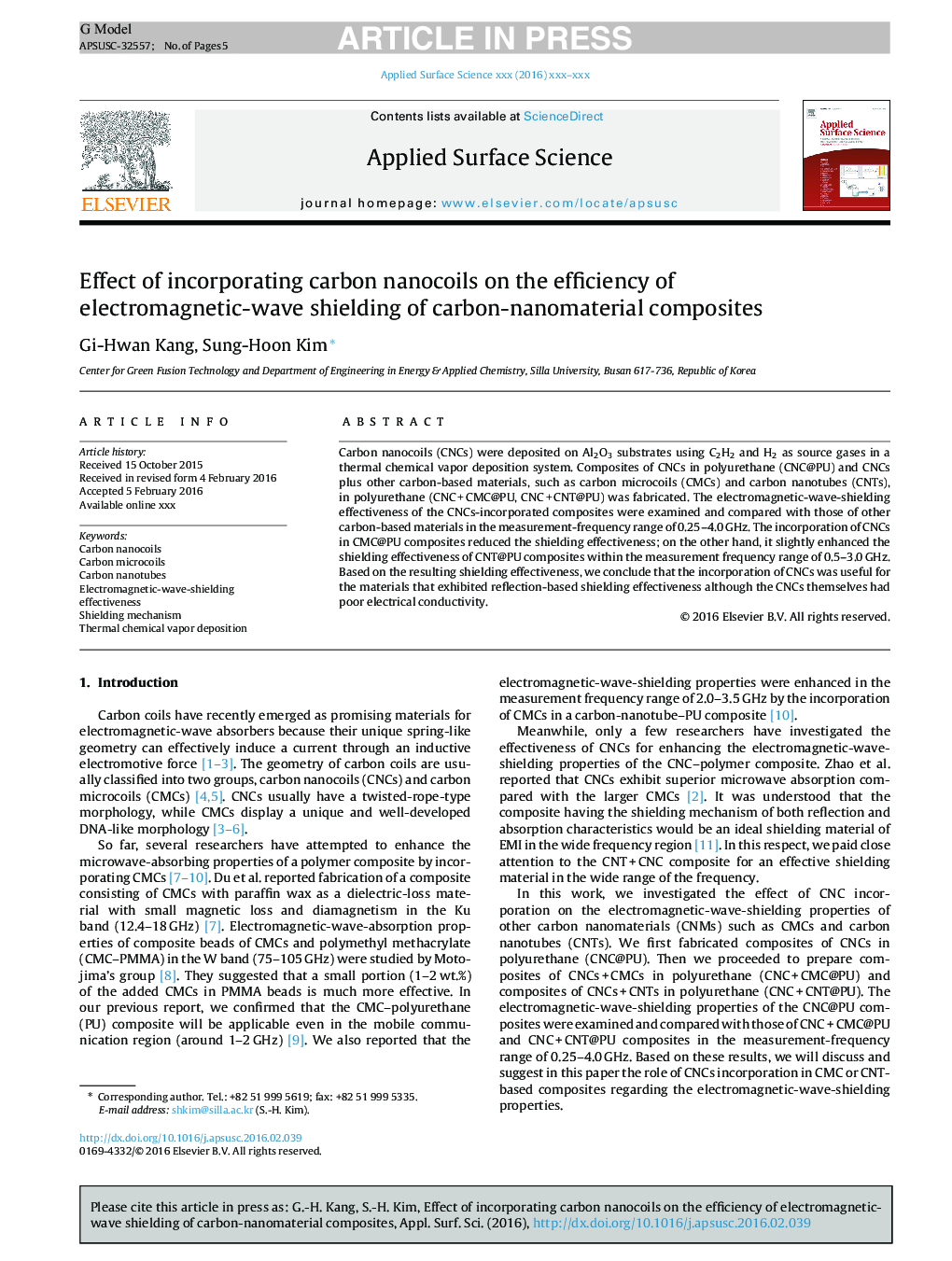| Article ID | Journal | Published Year | Pages | File Type |
|---|---|---|---|---|
| 5348641 | Applied Surface Science | 2016 | 5 Pages |
Abstract
Carbon nanocoils (CNCs) were deposited on Al2O3 substrates using C2H2 and H2 as source gases in a thermal chemical vapor deposition system. Composites of CNCs in polyurethane (CNC@PU) and CNCs plus other carbon-based materials, such as carbon microcoils (CMCs) and carbon nanotubes (CNTs), in polyurethane (CNCÂ +Â CMC@PU, CNCÂ +Â CNT@PU) was fabricated. The electromagnetic-wave-shielding effectiveness of the CNCs-incorporated composites were examined and compared with those of other carbon-based materials in the measurement-frequency range of 0.25-4.0Â GHz. The incorporation of CNCs in CMC@PU composites reduced the shielding effectiveness; on the other hand, it slightly enhanced the shielding effectiveness of CNT@PU composites within the measurement frequency range of 0.5-3.0Â GHz. Based on the resulting shielding effectiveness, we conclude that the incorporation of CNCs was useful for the materials that exhibited reflection-based shielding effectiveness although the CNCs themselves had poor electrical conductivity.
Keywords
Related Topics
Physical Sciences and Engineering
Chemistry
Physical and Theoretical Chemistry
Authors
Gi-Hwan Kang, Sung-Hoon Kim,
